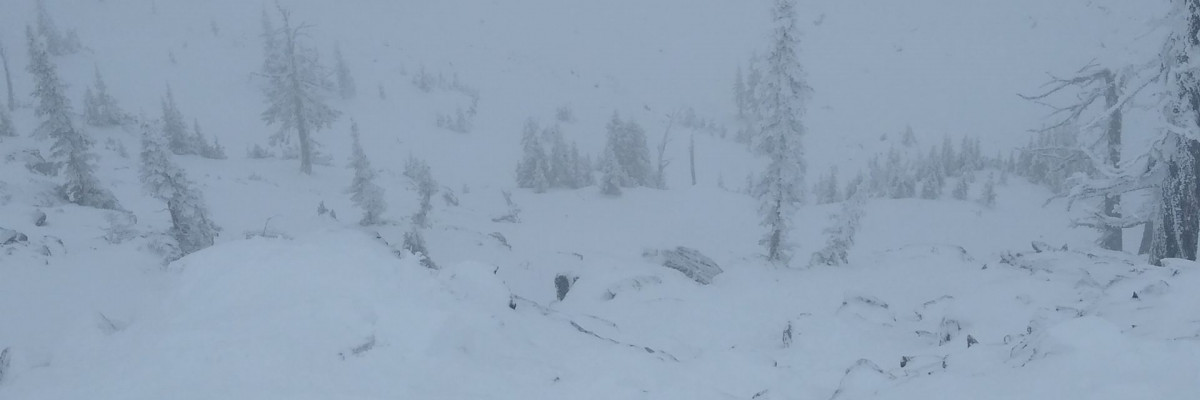The avalanche danger for the West Central Montana backcountry is Considerable on all aspects above 6500 feet. Fresh snow and wind have overloaded our snowpack, creating hazardous avalanche conditions. Careful route finding and snowpack evaluation are essential today.
Good morning, this is Todd Glew with the West Central Montana Avalanche Center avalanche advisory for December 14, 2019. This danger rating does not apply to operating ski areas, expires at midnight tonight, and is the sole responsibility of the U.S. Forest Service.
Weather and Snowpack
Mountain temperatures are currently in the teens. Snowtel sites are reporting over an inch of SWE and 12+ inches of snow during the past 24 hours, with gusty ridge top winds out of the WNW.
The snowpack varies significantly throughout our forecast area. The central theme is that we have a complex snowpack with the potential for large dangerous avalanches breaking near the ground. We have been experiencing red flags such as cracking and collapsing during the past week. Snow tests have also been propagating, failing near the ground. Stay off of and away from terrain steeper than 30 degrees.
The primary avalanche concern is persistent slab avalanches on elevations above 6500 feet. We have the recipe for dangerous avalanches today, with strong snow overlying weak snow. The snowpack has poor structure and the possibility for large dangerous avalanches, breaking near the ground.
The secondary avalanche concern is wind slabs found on leeward slopes near ridge tops. Be on the lookout for pillowy features near ridge tops or cross-loaded features. Also keep an eye out for cornices, which are sensitive and can break back further than expected. If you trigger even a small wind slab or cornice, it has the potential to step down, triggering a larger persistent slab avalanche.
If you get out in the mountains, be on the lookout for red flags such as cracking or collapsing. Dig a snow pit and perform stability tests. Be on the lookout for changing conditions as you gain elevation. Areas prone to avalanches are where strong snow overlays weak snow. Avalanches are more likely the higher you get in elevation. Conservative route-finding and terrain choice are essential today!
Any information is essential for creating an avalanche forecast. Please submit your observations here.
Avalanche and Weather Outlook
Continued snow showers are forecast through Sunday evening, with close to a foot of snow possible. Temperatures are forecast to rise into the upper 20’s above 6000 feet during the day, with gusty ridge top winds out of the WNW.
Due to the complex structure of our snowpack, any new snow and wind can tip the scale and raise the avalanche danger.
















